Introduction
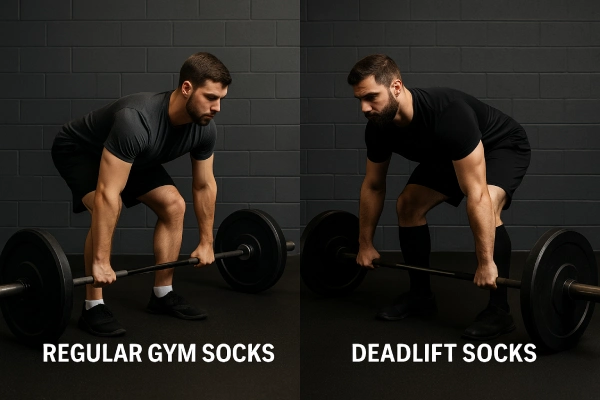
At first glance, socks may seem like a small detail in your training gear. Many lifters assume that a pair of regular gym socks is enough to handle squats, bench presses, and yes—even deadlifts. After all, they cover your feet, keep you comfortable, and wick away sweat. What else could you possibly need?
But if you’ve ever walked away from a heavy deadlift session with bloody shins, torn socks, or bruises that made you question your training choices, you already know the answer. Regular gym socks simply aren’t designed for the demands of pulling heavy weights from the floor. Deadlift socks, on the other hand, are a specialized piece of equipment created to solve these exact problems.
If you’re not familiar with what deadlift socks are and why lifters use them, check out our full guide: What Are Deadlift Socks and Why Do Powerlifters Use Them? In this article, we’ll break down the key differences between deadlift socks and regular gym socks—from material and length to support and safety—so you can decide whether investing in a pair of dedicated lifting socks is worth it.
Material Differences: Durability vs Comfort
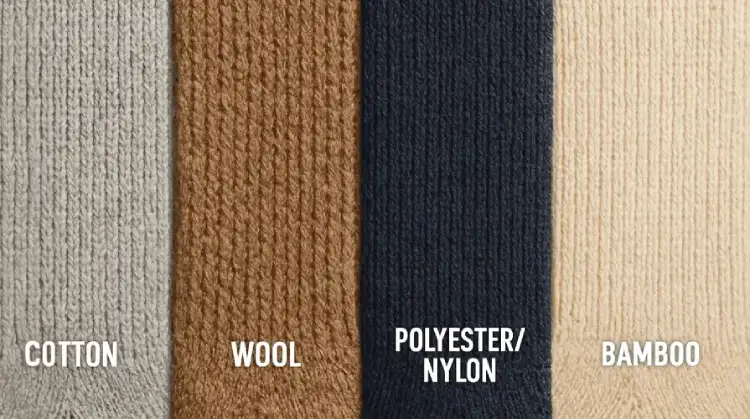
One of the most significant distinctions comes down to what each type of sock is made from.
- Regular Gym Socks: These are usually made with cotton or cotton blends. They feel soft, allow for airflow, and absorb moisture. For general workouts like cardio or machine-based strength training, cotton socks are fine. However, cotton fibers wear out quickly under friction, and they tend to hold onto sweat, which can create bacteria growth and odor.
- Deadlift Socks: In contrast, these are typically made from nylon, polyester, and elastic fibers. The purpose of these blends is durability, elasticity, and resistance to barbell knurling. Nylon and polyester are far more abrasion-resistant than cotton, meaning they can take repeated scraping without tearing. They also wick sweat more efficiently, which reduces odor and skin irritation.
If you’re pulling a barbell across your shins multiple times per week, you need the extra toughness of synthetic fibers. Regular cotton socks just won’t last.
Length and Coverage: Ankle vs Knee-High
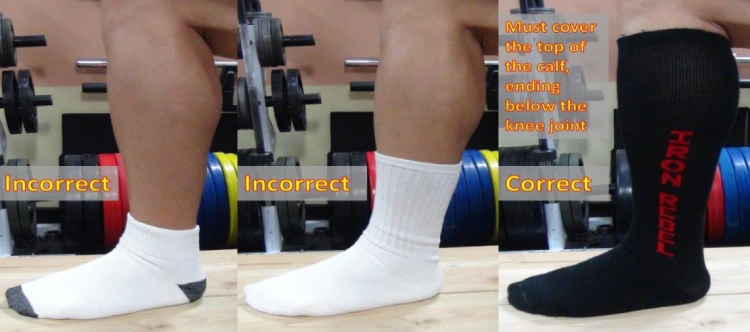
The second key difference is how much of your leg is covered.
- Regular Gym Socks: These are commonly ankle-length, crew-length, or mid-calf at best. They leave much of the shin exposed. For most exercises, that’s not a problem. But for deadlifts, the shin is exactly where the barbell drags upward. Exposed skin is vulnerable to scratches, cuts, and bruises.
- Deadlift Socks: Always knee-high. This isn’t a fashion choice; it’s a functional requirement. The barbell rides close to the body during a proper deadlift, and knee-high socks ensure that the shin is protected from start to lockout. This coverage is also important for hygiene reasons—gyms don’t want blood or skin left on barbells.
In fact, most powerlifting federations (including the IPF—International Powerlifting Federation) explicitly require knee-high socks for deadlifts in competition.
If you deadlift seriously, coverage matters. Deadlift socks guarantee that your shins are fully protected, while regular gym socks leave you exposed.
Thickness and Support: Optimized vs Generic
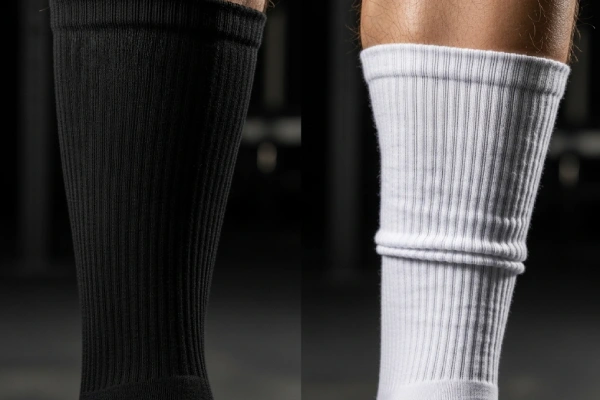
Sock thickness might not sound important until you feel the difference under load.
- Regular Gym Socks: Thickness varies widely. Some are thin and breathable, others thick and cushioned. But none are designed with barbell contact in mind. Thin socks can tear easily, while thick cushioned socks may slide around inside your shoes, reducing stability.
- Deadlift Socks: Designed with a balanced thickness—thin enough that your foot stays locked into position inside your lifting shoes, but thick enough to withstand repeated friction against knurled steel. The elastic weave also ensures a snug fit around the calf, so the sock doesn’t slide down mid-lift.
Deadlift socks provide consistent, optimized support for lifting. Regular socks are hit-or-miss depending on the brand and style.
Protection & Safety: Where the Real Difference Lies
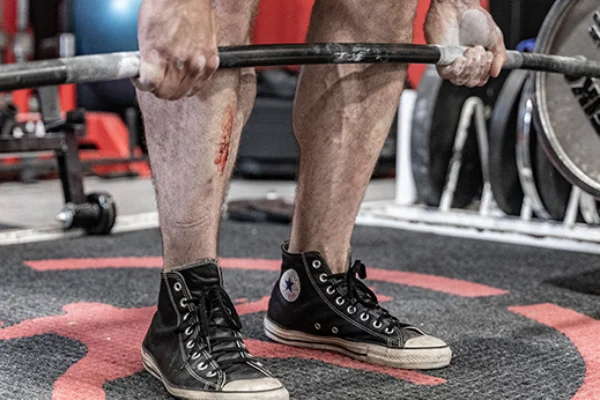
This is arguably the most important factor.
- Regular Gym Socks: Offer minimal to no shin protection. When a loaded barbell scrapes along your shin, cotton socks compress easily, doing little to stop cuts or bruises. If the skin breaks, you’re also at higher risk of infection—especially in a sweaty gym environment.
- Deadlift Socks: Built for protection. The durable fabric acts like a shield, minimizing abrasions, reducing bruising, and creating a barrier between skin and steel. This doesn’t just prevent injuries; it also reduces bacteria transfer between lifter and barbell, a huge hygiene consideration for shared gym equipment.
Professional lifters often say: “A $20 pair of socks can save you from weeks of shin pain.” That’s not an exaggeration. If you’ve ever had bloody shins after deadlifts, you already know why deadlift socks are worth it.
Training vs Competition Use
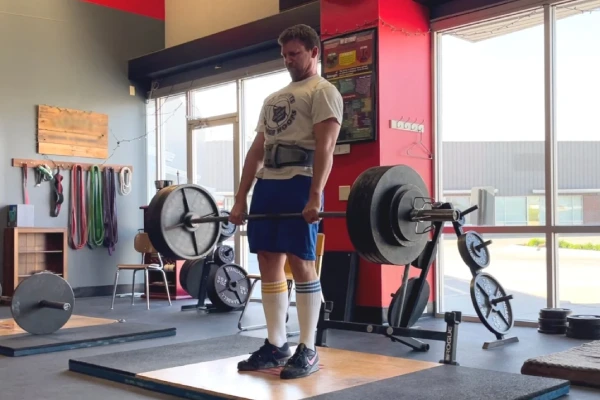
Now let’s consider context—when and where each type of sock works best.
- Training in the Gym: Recreational lifters may get by with regular gym socks during lighter sessions. But as soon as you’re deadlifting heavy (even 225 lbs or more), the bar will scrape your shins. For long-term safety, deadlift socks make sense even outside competition.
- Competition Rules: In powerlifting meets, deadlift socks aren’t optional—they’re mandatory. Federations like the IPF require knee-high socks that cover the shin completely. This isn’t just for lifter safety; it’s also for hygiene. If you plan on competing, you won’t even be allowed on the platform without them.
While regular socks are acceptable for casual gym-goers, serious lifters and competitors need deadlift socks both for performance and compliance.
Style and Practical Considerations
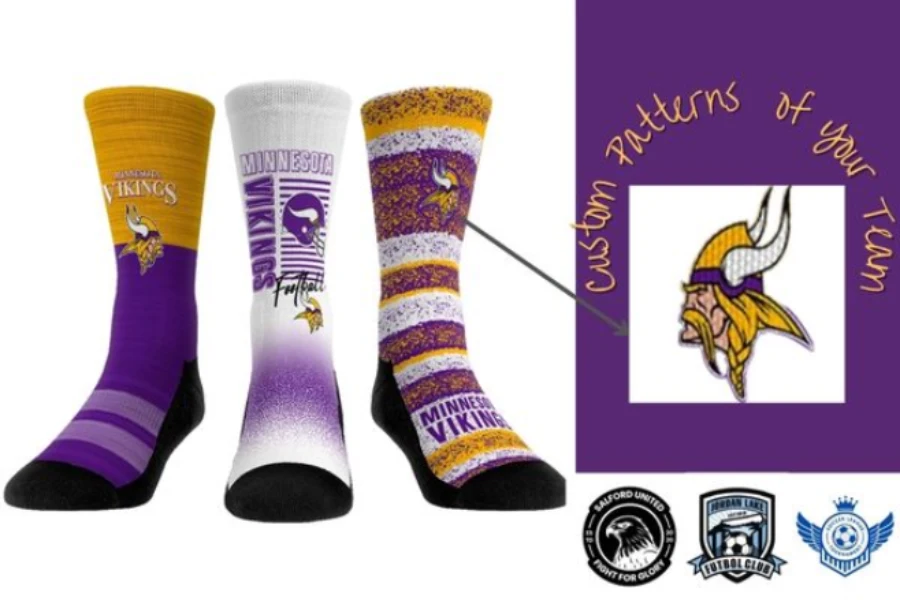
An often-overlooked difference is how these socks fit into your overall training routine.
- Regular Gym Socks: Multipurpose. You can wear them for running, CrossFit, or casual gym use. They’re inexpensive and widely available.
- Deadlift Socks: Purpose-built. While you probably won’t wear them for casual workouts or everyday life, they’re a targeted investment for strength training. Many brands also offer stylish designs, including team logos or IPF-approved models, which can add a motivational edge.
Regular socks win on versatility, but deadlift socks are superior in specialization.
Key Takeaways: Deadlift Socks vs Regular Gym Socks
To make the differences crystal clear, here’s a quick comparison:
| Feature | Regular Gym Socks | Deadlift Socks |
|---|---|---|
| Material | Cotton blends, less durable | Nylon/polyester blends, abrasion-resistant |
| Length | Ankle or crew, limited coverage | Always knee-high, full shin coverage |
| Thickness | Varies, not optimized for lifting | Optimized thickness for barbell contact |
| Protection | Minimal, prone to cuts/bruises | High protection against bar knurling |
| Competition Use | Not allowed | Required by powerlifting federations |
| Durability | Wear out quickly | Designed for heavy lifting stress |
FAQs About Deadlift Socks vs Regular Gym Socks
Do I really need deadlift socks if I only lift casually?
If you’re lifting light weights occasionally, regular gym socks might be fine. But as soon as you start deadlifting heavier loads, deadlift socks provide better protection and durability.
Are deadlift socks required in powerlifting competitions?
Yes. Most federations, including the IPF, require knee-high socks for deadlifts to protect shins and maintain hygiene. Regular socks are not allowed.
Can I use soccer or football socks instead of deadlift socks?
You can, since they’re also knee-high and durable. However, specialized deadlift socks are usually more abrasion-resistant and designed for barbell contact.
How often should I replace my deadlift socks?
With proper care, a pair of deadlift socks can last 6–12 months or longer, depending on training frequency. Replace them when elasticity fades or fabric shows wear.
What’s the biggest difference between deadlift socks and regular gym socks?
The key difference is protection. Regular socks cover your feet, but deadlift socks cover your shins, preventing cuts, bruises, and injuries during heavy pulls.
Conclusion
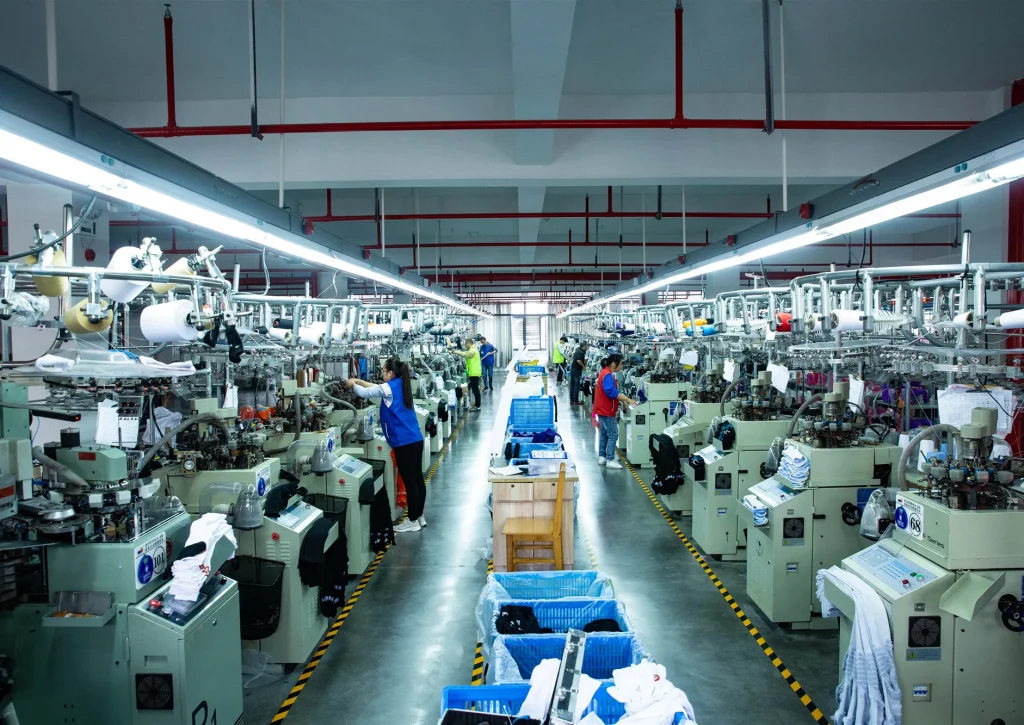
If you’re a casual gym-goer who occasionally deadlifts light weights, regular socks may seem adequate. But if you’re serious about strength training—whether you’re pulling 200 or 600 pounds—the differences become undeniable.
Deadlift socks outperform regular gym socks in three critical areas: durability, protection, and compliance with competition rules. They keep your shins safe, improve hygiene, and give you confidence that your gear won’t fail mid-lift.
At the end of the day, upgrading to deadlift socks is one of the simplest, most cost-effective steps you can take to enhance both your safety and performance. For lifters who want to push their limits without worrying about bloody shins or torn socks, the choice is clear.
👉 Looking for reliable, high-quality deadlift socks for your gym, team, or retail brand? Max Hosiery specializes in durable, customizable performance socks that meet both training and competition standards.
